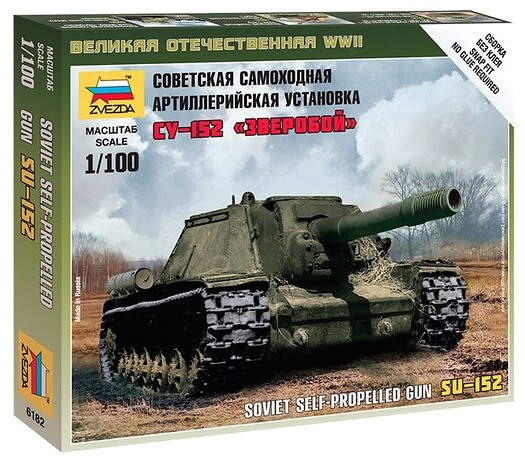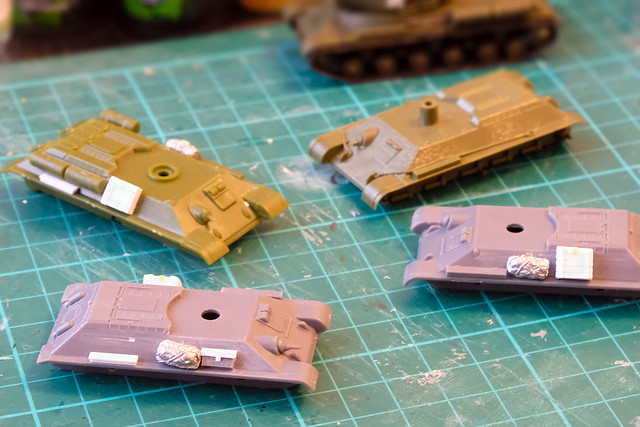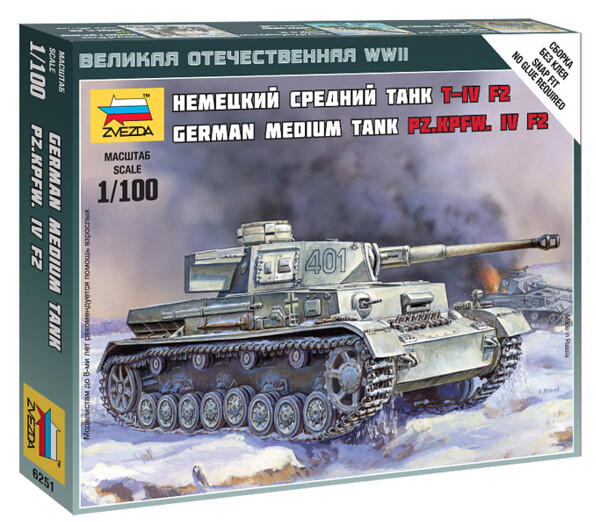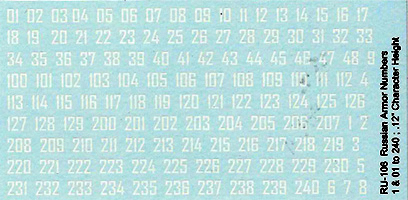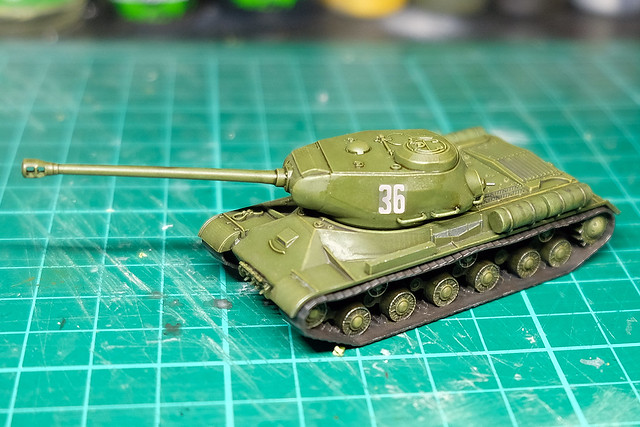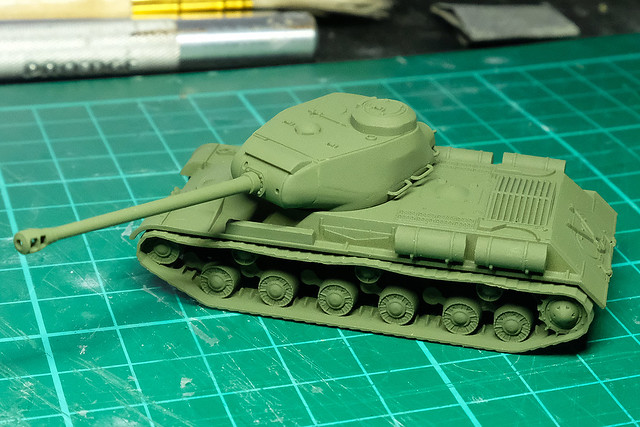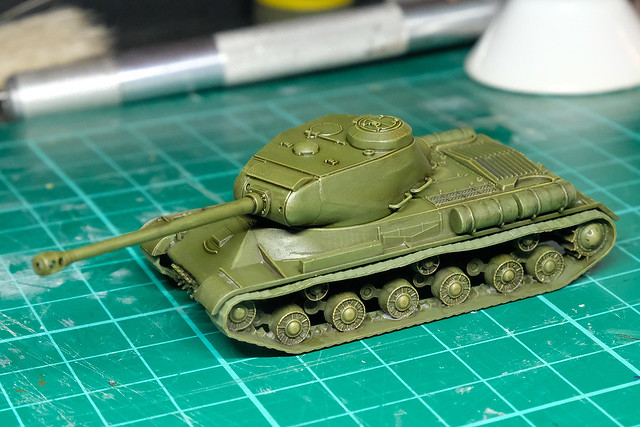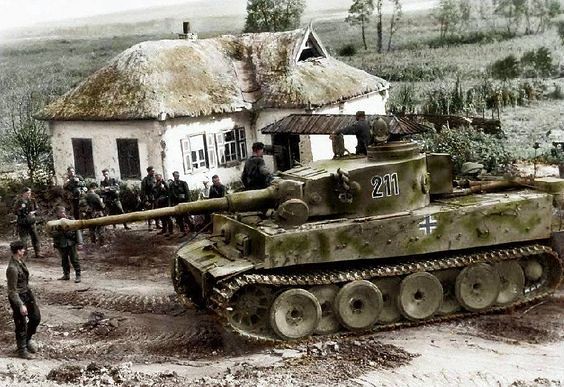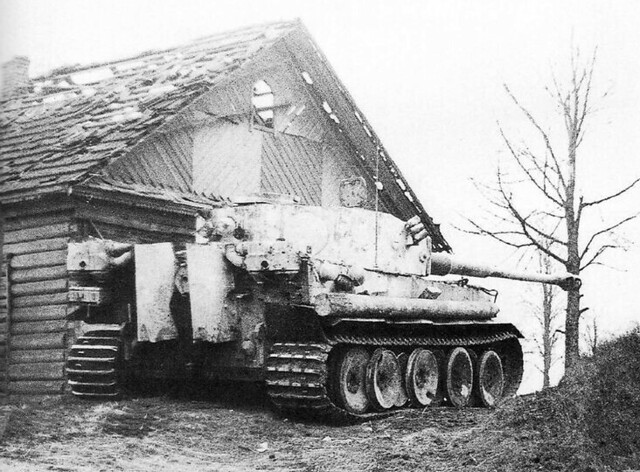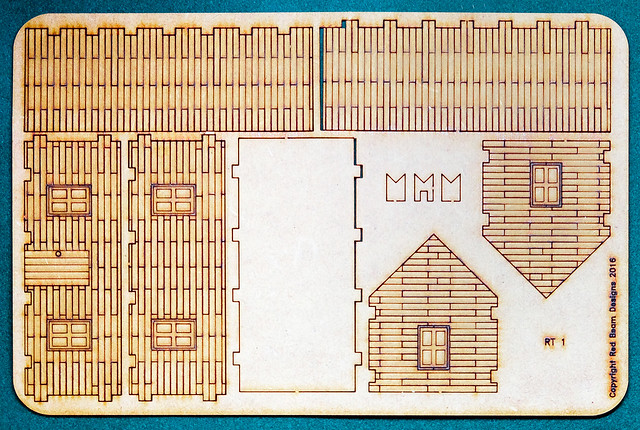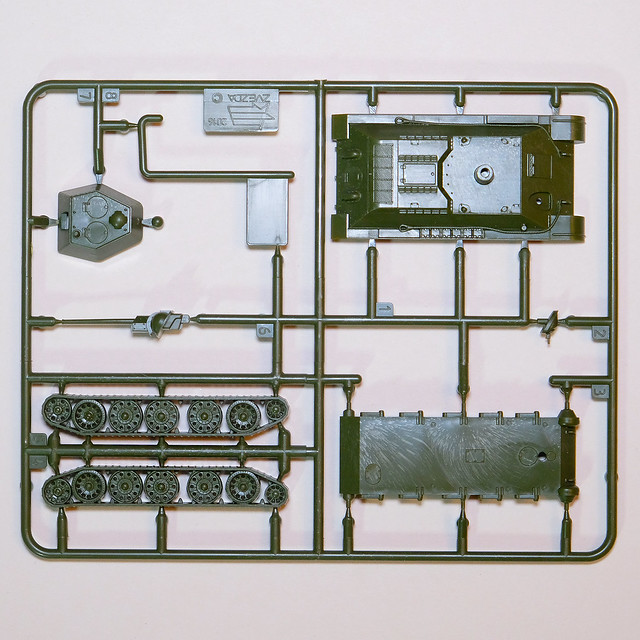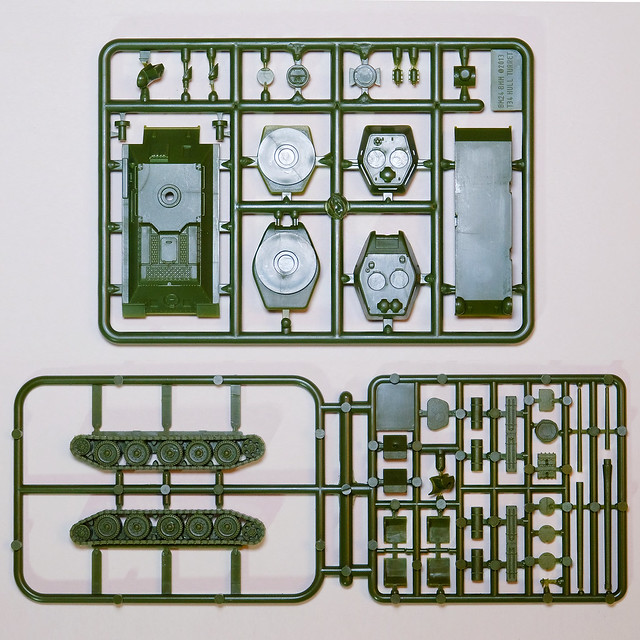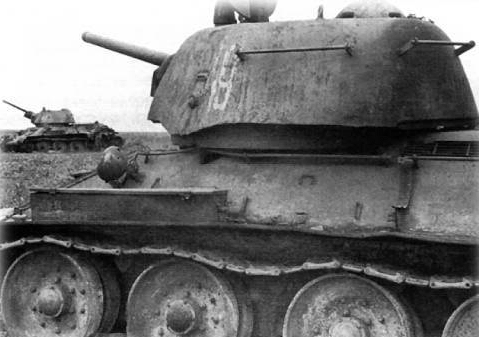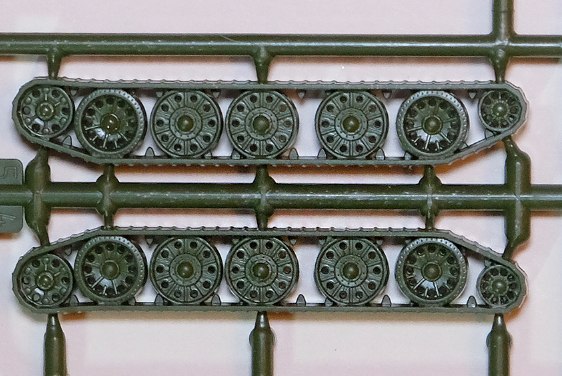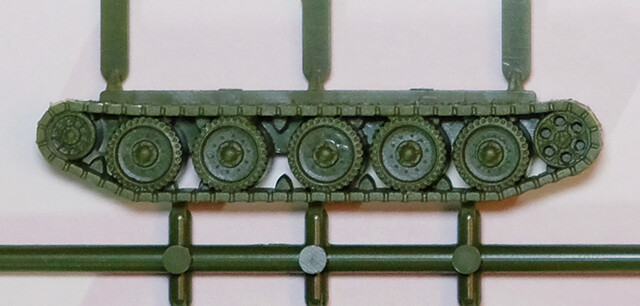New to my stash for my 'Battle of Kursk' themed wargame are three lovely 1/100 Soviet tank destroyers. The plastic Zvezda SU-152 and two Skyrex white metal SU-122s...
Although I call them 'Cat Killers' I believe the nickname really translates from Russian as 'Animal Killers' - referring to their intended victims, the German Tigers, Panthers and Elephants - and it really was only applied to the SU-152 and it's massive gun. Still, the SU-122's big gun was nothing to be sniffed at either and had the same function - to get rid of those pesky Kraut Heavies!
These will make up the core of my Soviet force for my planned game of GF9 'TANKS!', as the Soviets fought more defensively in this battle.
Diary of a novice scale model maker and his adventures in the wacky world of Braille Scale.
Wednesday 31 January 2018
Sunday 28 January 2018
1/100 Plastic T-34/76 Kits - Part 2
A *very* slow Sunday on the workbench, due to having to babysit the daughter's very needy dog! ("No, don't make models, tickle me...Me, me, me!")
Anyway, got the stowage done for my T-34s - just a few extra tool boxes and what-not. I also trimmed off the horrible plastic 'bumps' that are supposed to represent the 'hand rails', so I'm a lot more satisfied now.
It seems to me that making accessories for 1/100 scale armour is a little anal, but I can't seem to kick the habit. But you can tell I'm more used to making such things in 1/72 scale as my attempts are a little on the big side. Still, they add variety onto otherwise very spartan Soviet tanks.
And that's it for today, I'm afraid. Not a big modelling weekend really and the time has flown.
Next: I'll clean the models with soapy water before applying the primer coat.
Anyway, got the stowage done for my T-34s - just a few extra tool boxes and what-not. I also trimmed off the horrible plastic 'bumps' that are supposed to represent the 'hand rails', so I'm a lot more satisfied now.
It seems to me that making accessories for 1/100 scale armour is a little anal, but I can't seem to kick the habit. But you can tell I'm more used to making such things in 1/72 scale as my attempts are a little on the big side. Still, they add variety onto otherwise very spartan Soviet tanks.
And that's it for today, I'm afraid. Not a big modelling weekend really and the time has flown.
Next: I'll clean the models with soapy water before applying the primer coat.
Thursday 25 January 2018
Stash Update - More Bad Guys!
Continuing on with my 1/100 'Battle of Kursk' project for my forthcoming GF9 'TANKS!' game, I have added more 'bad guys' to the collection. These are the German's canon fodder for the battle, the venerable Panzer IV F2 - in this case, in model form by Zvezda...
Now, that may sound disparaging, but that's only because the main focus of anyone's attention when talking about the Battle of Kursk is always inevitably the 'new' German big cats - the Tiger and the Panther. It seems that the poor old Panzer IV gets a wee bit overlooked, and yet it was still the backbone of panzer formations at the time and was still a pretty good tank.
In fact, due to the Soviet's muddling about with the - by then - obviously outmoded 'KV' heavy tank line the Pzr. IV could still hold it's own with practically anything the Red Army could throw at it. It had no problem dealing with either of the Soviet's two main battle tanks, the sluggish KV-1S or even it's nippier little cousin, the T-34/76. [In fact, I have heard many people say that had the Germans churned out more Pzr. IVs instead of relying on the new heavy tank 'super cats' - which turned out to have a lot of technical and reliability problems - the outcome of the battle *might* have been different. But that's an easy thing to say and I'm sure it's not that simple.]
But, hypothetical meanderings aside, a German panzer force of 1943 still requires a base of Panzer IVs in it's mix, so I bought two. Once again, I have gone with the budget option and plumped for Zvezda kits. At £3.50 each they fit the bill as 'canon fodder' for my game and I can easily get the GF9 TANKS!' data cards offline.
The Zvezda model is specifically the F2 variant of the tank, which was really seeing it's last hurrah at the the Battle of Kursk (the 'G' variant beginning to come into prominence). But despite this, with it's KwK 40 L/43 75mm gun, the F2 was still superior to the KV-1 and T-34 in terms of ballistics.
As with Zvezda's T-34s - which I am just working on - both PSC and Battlefront do offer more options and the ability to model more variants of the tank with their Pzr. IV kits. But I just don't need this flexibility, so the cost savings was of the greatest importance to me.
Here's a rather nice YouTube review of the Zvezda Pzr. IV F2 by Modeldads...
Now, that may sound disparaging, but that's only because the main focus of anyone's attention when talking about the Battle of Kursk is always inevitably the 'new' German big cats - the Tiger and the Panther. It seems that the poor old Panzer IV gets a wee bit overlooked, and yet it was still the backbone of panzer formations at the time and was still a pretty good tank.
In fact, due to the Soviet's muddling about with the - by then - obviously outmoded 'KV' heavy tank line the Pzr. IV could still hold it's own with practically anything the Red Army could throw at it. It had no problem dealing with either of the Soviet's two main battle tanks, the sluggish KV-1S or even it's nippier little cousin, the T-34/76. [In fact, I have heard many people say that had the Germans churned out more Pzr. IVs instead of relying on the new heavy tank 'super cats' - which turned out to have a lot of technical and reliability problems - the outcome of the battle *might* have been different. But that's an easy thing to say and I'm sure it's not that simple.]
But, hypothetical meanderings aside, a German panzer force of 1943 still requires a base of Panzer IVs in it's mix, so I bought two. Once again, I have gone with the budget option and plumped for Zvezda kits. At £3.50 each they fit the bill as 'canon fodder' for my game and I can easily get the GF9 TANKS!' data cards offline.
The Zvezda model is specifically the F2 variant of the tank, which was really seeing it's last hurrah at the the Battle of Kursk (the 'G' variant beginning to come into prominence). But despite this, with it's KwK 40 L/43 75mm gun, the F2 was still superior to the KV-1 and T-34 in terms of ballistics.
As with Zvezda's T-34s - which I am just working on - both PSC and Battlefront do offer more options and the ability to model more variants of the tank with their Pzr. IV kits. But I just don't need this flexibility, so the cost savings was of the greatest importance to me.
Here's a rather nice YouTube review of the Zvezda Pzr. IV F2 by Modeldads...
Wednesday 24 January 2018
Camo Scheme for my Zvezda 1/100 IS-2
Before I actually get down to the nitty-gritty of painting a camouflage pattern on my IS-2, there is the little matter of applying the decals. There isn't always insignia on WW2 Soviet tanks, in fact sometimes they left the factory and went straight into action 'as was', but more usually at least a vehicle number was applied.
As a graphic designer I really like the Soviet fonts, but finding good decals in 15mm scale can be a little challenging (Zvezda does not supply any with the model). My usual source of smaller scale armour decals is Minibits.net as they have a rather good selection of historic and generic numbers, letters, military emblems and national symbols in 15mm scale.
I had already purchased their 'Russian WWII 'Cryllic style' numbers [1:100-1:76]' decal sheet for my 'Battle of Kursk' project's T-34s and was tempted to use it for my IS-2 as well...
But at the last minute I changed my mind and went hunting through my decal stash for something more suitable for the IS-2's larger turret. I managed to find a nice set of Cyrillic numbers which had been for a 1/72 BA-10 armoured car, but seemed to just the size I was after.
As usual I prepared my model surface for decals by painting on a small area of gloss varnish, just where the numbers would go. Once the varnish was dry, I used some Microscale MicroSet setting solution to seat the decal. I find that MicroSet and MicroSol liquids help prevent silvering and hide the decals carrier film (although it can be clearly seen in the above photo, for now).
Once satisfied the decal is smooth, straight and adhering perfectly I let it dry and the dab on some MicroSol around the edges of the decals carrier film. This should further help the film blend in to the model's base coat and make the decal look like it has been painted on.
I conclude the process with a thin coat of satin varnish, to permanently fix the decal and protect it during the weathering stages.
The Camouflage Pattern
I'd decided that I wanted a winter camo pattern for my IS-2. Should I decide to add more late WW2 Soviet tanks to it (for a game of GF9 'TANKS!') I wanted to distinguish these Soviet vehicles from my mid-war 'Kursk' collection (which will be in plain Russian Green for the summer months of the war).
I didn't really want to do an all-over 'white-washed' winter scheme, so looked around for something a little different. Tanks-Encyclopaedia came to my aid with a couple of very nice examples of winter camp schemes...
Initially, I favoured the 'dotty' pattern, but the thought of painting all those on at 15mm scale eventually put me off! The 'snow tiger' pattern won me over as it's just the sort of thing that can be done well with just a brush.
I'll began by sketching out the outlines of the 'snow stripes' using a white chinagraph pencil...
Next: Camo Scheme Painting.
 |
| IS-2 model 1943, 88th Independent Guards Heavy Tank Regiment, Berlin, April 1945. Source: Tanks-Encyclopaedia.com |
I had already purchased their 'Russian WWII 'Cryllic style' numbers [1:100-1:76]' decal sheet for my 'Battle of Kursk' project's T-34s and was tempted to use it for my IS-2 as well...
But at the last minute I changed my mind and went hunting through my decal stash for something more suitable for the IS-2's larger turret. I managed to find a nice set of Cyrillic numbers which had been for a 1/72 BA-10 armoured car, but seemed to just the size I was after.
As usual I prepared my model surface for decals by painting on a small area of gloss varnish, just where the numbers would go. Once the varnish was dry, I used some Microscale MicroSet setting solution to seat the decal. I find that MicroSet and MicroSol liquids help prevent silvering and hide the decals carrier film (although it can be clearly seen in the above photo, for now).
Once satisfied the decal is smooth, straight and adhering perfectly I let it dry and the dab on some MicroSol around the edges of the decals carrier film. This should further help the film blend in to the model's base coat and make the decal look like it has been painted on.
I conclude the process with a thin coat of satin varnish, to permanently fix the decal and protect it during the weathering stages.
The Camouflage Pattern
I'd decided that I wanted a winter camo pattern for my IS-2. Should I decide to add more late WW2 Soviet tanks to it (for a game of GF9 'TANKS!') I wanted to distinguish these Soviet vehicles from my mid-war 'Kursk' collection (which will be in plain Russian Green for the summer months of the war).
I didn't really want to do an all-over 'white-washed' winter scheme, so looked around for something a little different. Tanks-Encyclopaedia came to my aid with a couple of very nice examples of winter camp schemes...
 |
| 29th Guards Heavy Tank Battalion, Poland, early 1945. Source: Tanks-Encyclopedia.com |
 |
| Partial winter camouflage, Eastern Prussia, February 1945. Source: Tanks-Encyclopaedia.com |
I'll began by sketching out the outlines of the 'snow stripes' using a white chinagraph pencil...
Next: Camo Scheme Painting.
Sunday 21 January 2018
Painting the Zvezda 15mm IS-2
Having broken the ice with this easy little build it's time to see how rusty my brush skills have gotten. I began by having a look back over some of my old 15mm tank posts and realised that I don't really have a set 'process'...I surprised myself to realise that my whole modelling technique is based on 'winging it'! 😀
Well, too late to change my ways now, so lets just see what happens. However, if you'd like to see and example of a more structured process for painting a 15mm IS-2, then have a look at the excellent Herbert Erpaderp's tutorial for some alternative ideas...
And now, on with my very unstructured method...
Base Coat/Priming
I begin with the one procedure that hasn't changed that much over all the vehicles I have made, and that is to prime the tank with a coat of Humbrol's 'Light Olive' Acrylic Aerosol. I've mentioned before that I like this colour as it can be easily modulated to become any of the WW2 Allied 'greens', from British Bronze, to US Olive Drab to Soviet 'Russian Green' (and even Finnish 'Moss Green').
To modify the base olive coat to something a little more deep and rich for Soviet armour I will be trying out a wash of Vallejo's Model Air 'Russian Green [71017]. This paint is really intended for airbrush use and is already pre-diluted so *should* work quite well as a wash (fingers crossed).
It worked! ...Er, I'm not surprised at all. Cough. The difference is subtle, but a richer and deeper green. It is a little patchy and streaky (being a wash) but I like that as it adds some wear/fading effect to the overall appearance of the tank.
Note: I could also have achieved a similar effect more quickly by simply spraying Vallejo's Acrylic Russian Green Primer on to begin with. But, I can't actually find my bottle of this at the moment, plus I need to reacquaint myself with the workings of my airbrush before I take on a live project with it!
Highlighting and Shading
And so, moving on, I will try out Herbert Erpaderp's suggestion and give my base green a bit of a highlighting with some dry brushing. I'll simply mix some of the Russian Green with some lighter buff paint to produce my highlighting colour. Though, again, I will be going for a subtle effect...
Well, I like the effect. Is it too subtle, and will the following shadow wash negate the effect? I guess that's what experimentation is all about though - if it doesn't work I will modify the technique.
The paint I used was Vallejo's Model Color Yellow Ochre [913] as this gives a warmer and more 'sunny' highlight than using straight white. I built up the strength of the ochre, mixing it with the Russian Green paint, until it hit the strength that I was after.
Right...So, the moment of truth, will the shadow wash destroy the 3D highlighting effect I've just created? ------>
Citadel's Agrax Earthshade wash) did darken some of the highlights I had previously applied BUT not so much as to have made the prior highlighting a waste of time. The contrast between the highlighted bits and the base colour areas is still noticeable through the translucent wash.
It is - once again - very subtle so I guess if you wanted something more obvious the trick might be to exaggerate the highlight before applying the dulling wash. I'd do this by dry brushing with an even lighter shade of ochre (bordering on yellow).
The Tracks
Now to to what is perhaps the least satisfying part of the Zvezda model, the tracks. The model has very simplified tracks with practically no tread pattern to speak of, just regularly spaced slats. The challenge here is to make something interesting out of these rather dull and uninspiring components.
The easiest 'cheat' is to disguise the lack of detail by slapping on a thick layer of 'mud' effect (which, I admit, I have resorted to doing before). But, we shall see...
First off, I mixed some Vallejo German Cam. Black Brown [822] with a spot of Vallejo Game Color Silver [052] to make a rusty steel colour. This will be my base coat for my tracks. That done, I'll give them a wash of good old reliable Agrax Earthshade mixed with a little Citadel Nuln Oil to give the tracks a greasy oily look.
And finally, I'll apply some powdered graphite to give the raised tracks a metallic sheen and also some dots and spots of silver here and there to simulate the raw steel of the tracks showing through where damaged...
Hmmm, tempted to add a mud layer.
Well, that's the base coat painting done. I have some minor detail painting to do on some of the none green parts but otherwise it's onto the decals. Not that there are many (remember, no decals come with the Zvezda kit), the wartime IS-2s seem to have had little more than numbers unless they were a Guards unit.
Next: Decals and the Winter Camouflage.
Well, too late to change my ways now, so lets just see what happens. However, if you'd like to see and example of a more structured process for painting a 15mm IS-2, then have a look at the excellent Herbert Erpaderp's tutorial for some alternative ideas...
And now, on with my very unstructured method...
Base Coat/Priming
I begin with the one procedure that hasn't changed that much over all the vehicles I have made, and that is to prime the tank with a coat of Humbrol's 'Light Olive' Acrylic Aerosol. I've mentioned before that I like this colour as it can be easily modulated to become any of the WW2 Allied 'greens', from British Bronze, to US Olive Drab to Soviet 'Russian Green' (and even Finnish 'Moss Green').
To modify the base olive coat to something a little more deep and rich for Soviet armour I will be trying out a wash of Vallejo's Model Air 'Russian Green [71017]. This paint is really intended for airbrush use and is already pre-diluted so *should* work quite well as a wash (fingers crossed).
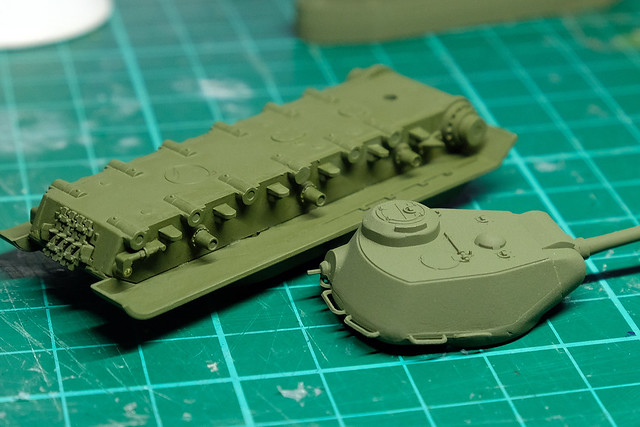 |
| The IS-2 hull (at back) has been modulated using Vallejo's Russian Green, while the turret is still in it's primer coat of light olive. |
It worked! ...Er, I'm not surprised at all. Cough. The difference is subtle, but a richer and deeper green. It is a little patchy and streaky (being a wash) but I like that as it adds some wear/fading effect to the overall appearance of the tank.
Note: I could also have achieved a similar effect more quickly by simply spraying Vallejo's Acrylic Russian Green Primer on to begin with. But, I can't actually find my bottle of this at the moment, plus I need to reacquaint myself with the workings of my airbrush before I take on a live project with it!
Highlighting and Shading
And so, moving on, I will try out Herbert Erpaderp's suggestion and give my base green a bit of a highlighting with some dry brushing. I'll simply mix some of the Russian Green with some lighter buff paint to produce my highlighting colour. Though, again, I will be going for a subtle effect...
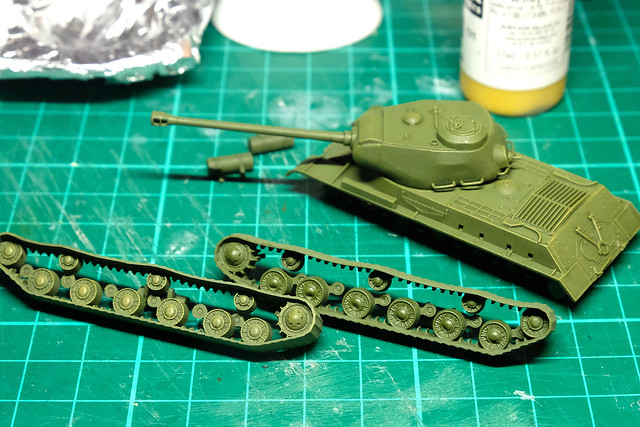 |
| It's very subtle, but the front set of tracks has been highlighted, while the rear set is just flat Russian Green. The hull and turret are highlighted. |
The paint I used was Vallejo's Model Color Yellow Ochre [913] as this gives a warmer and more 'sunny' highlight than using straight white. I built up the strength of the ochre, mixing it with the Russian Green paint, until it hit the strength that I was after.
Right...So, the moment of truth, will the shadow wash destroy the 3D highlighting effect I've just created? ------>
Citadel's Agrax Earthshade wash) did darken some of the highlights I had previously applied BUT not so much as to have made the prior highlighting a waste of time. The contrast between the highlighted bits and the base colour areas is still noticeable through the translucent wash.
It is - once again - very subtle so I guess if you wanted something more obvious the trick might be to exaggerate the highlight before applying the dulling wash. I'd do this by dry brushing with an even lighter shade of ochre (bordering on yellow).
The Tracks
Now to to what is perhaps the least satisfying part of the Zvezda model, the tracks. The model has very simplified tracks with practically no tread pattern to speak of, just regularly spaced slats. The challenge here is to make something interesting out of these rather dull and uninspiring components.
The easiest 'cheat' is to disguise the lack of detail by slapping on a thick layer of 'mud' effect (which, I admit, I have resorted to doing before). But, we shall see...
First off, I mixed some Vallejo German Cam. Black Brown [822] with a spot of Vallejo Game Color Silver [052] to make a rusty steel colour. This will be my base coat for my tracks. That done, I'll give them a wash of good old reliable Agrax Earthshade mixed with a little Citadel Nuln Oil to give the tracks a greasy oily look.
 |
| Still a bit wet, but hopefully rusty steel looking. |
Hmmm, tempted to add a mud layer.
Well, that's the base coat painting done. I have some minor detail painting to do on some of the none green parts but otherwise it's onto the decals. Not that there are many (remember, no decals come with the Zvezda kit), the wartime IS-2s seem to have had little more than numbers unless they were a Guards unit.
Next: Decals and the Winter Camouflage.
Saturday 20 January 2018
Stash Update 'Project Kursk' - Part 2
As my tank collection for this project is now into the production phase it's time to think ahead and begin to gather the bits and pieces I need for the playing mat (for a GF9 'TANKS!' game).
Obviously Project Kursk is a 'Russian Front' themed game set in 1943 and although buildings will be sparse for the type of open flat countryside that would be the setting for such a scenario I do want to include a few isolated farm buildings and huts to break up the line of fire. (I will also be including plenty of woodland, but more of that another time.)
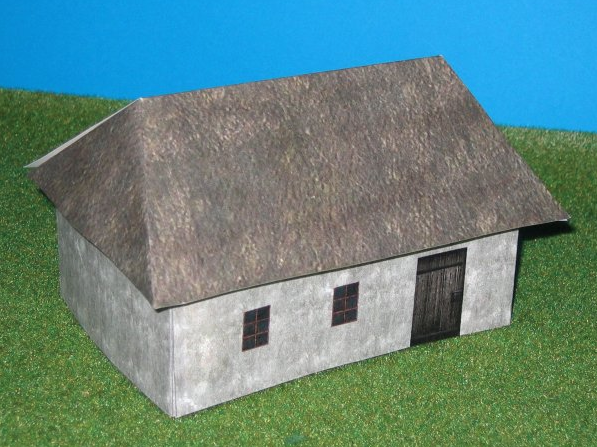 |
| As simple and cheap as you can get, but effective for a tabletop game. You will have to do a bit of math to scale these paper designs for 15mm though. |
Luckily there is no shortage of sources as 15mm wargaming is very popular and the manufacture of laser-cut MDF kits seems to have become a very popular cottage industry...
 |
| Star Fort Miniatures make this lovely Ukrainian/Russian rural church for £14.99 (the roof comes off for infantry placement). They also do a variety of Russian village dwellings. |
 |
| Minibits have this 15mm Russian Village set By Red Vectors for £18. |
 |
| The Red Beam 'Russian Timber house' seems to be a design I could replicate easily with plasticard strips. |
After just a few days the 'kit' arrived (I *think* they are laser-cut to order). It comes on just one small sheet (smelling nicely of burnt, laser cut MDF) of just ten parts, ready to knock-out and assemble...
Thursday 18 January 2018
1/100 Plastic T-34/76 Kits - Part 1
Note: As my project is a Battle of Kursk (July/August 1943) themed game, the Mod. 43 (Model 1943) T-34/76 (76mm gunned version) tank would make the most appropriate choice, so my purchases were based on this fact...
When reading about these various kits I noticed each seemed to have their own pros and cons and from my point of view, not one of them seemed to be the 'killer' T-34 kit that would make me plump for just that one manufacturer. So here's my overview of the three makes I decided to try out...
Sprue Review
I noticed immediately that each manufacturer had it's own ideas about what was necessary to make an acceptable wargame tank model. Zvezda takes a minimalist approach based on a strict budget, while PSC and Battlefront take the view that 'extras' and optional parts are what the gamer is after.
Both Zvezda (£3.15) and Battlefront (£5.95) supply a single tank in their packs, while PSC is more specifically geared towards the troop level game and their models usually come in a multipack (5 tanks for £18.64). However, a single PSC T-34 model is available if you go onto their website and look for their 'reinforcement' pack, which is an individual sprue of their T-34 tank set for just £5.99.
And here is what you get...
ZVEZDA
PLASTIC SOLDIER COMPANY
BATTLEFRONT
As you can see the amount of parts tends to escalate relative to the cost, even so Battlefront's two sprue set seems to offer very good value for money. While Zvezda does win the cost battle hands down you do have to bear in mind that with both PSC and Battlefront you are really getting two tanks for the price of one as they included the extra parts to make a T-34/85 variant turret which you can swap out. A nice option.
If, like me, all you want is the T-34 76mm gunned version the Zvezda budget kit makes sense. But having the ability to 'upgrade' your model by swapping turrets means that with PSC and Battlefront you can play games which are set from 1943 to the end of WW2 in Europe. The Zvezda tank is generally more suited to games set in 1943 to early 1944, the Soviets having accelerated the upgrade process from T-34s to T-34/85s in earnest in 1944 (the final version of the 76mm gunned T-34 was designated the 'Mod 44' - or Model 1944' - and was called the T-34/76E by the Germans).
 |
| A Model 1943 76mm gunned T-34 on display in Gdansk, Poland Source: Wikipedia |
T-34 Turret Components
All three turrets for the T-34/76 models are the late production Hexagonal Turret of the 'hard edge' (flat panel) versions equipped with the 76.2mm F-34 gun. This was indicative of the penultimate 76mm gunned T-34 version which was built from May 1942 to 1944, but is generally known as the Model 1943 (or the 'T-34/76D' by the Germans).
For complete list of the evolution of the 76mm gunned T-34 see: T-34 variants on Wikipedia.
Aside from the 'hexagonal' shape, this turret was an improvement over the original (model 1940-1942) T-34 turret principally because of it's two crew hatches in the roof. Amusingly, when these hatches were open, their side-by-side arrangement prompted the Germans to give the Model 1943 the nickname 'Micky Mouse'!
 |
| Top to bottom: Zvezda, PSC and Battlefront. |
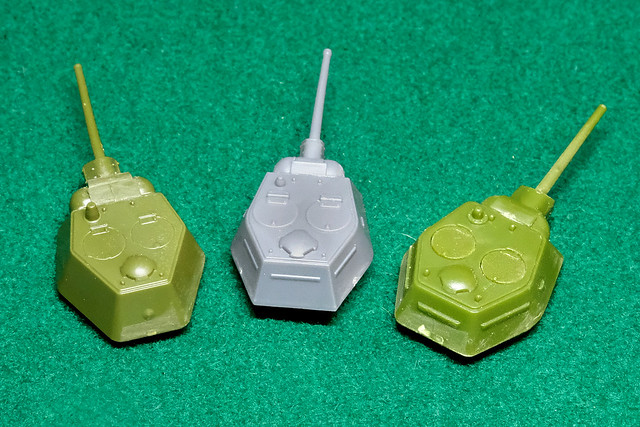 |
| Left to right: Zvezda, PSC and Battlefront. |
T-34 Hull Components
Further dimensional problems are obvious in the difference in sizes between the three makes of hull. While the Zvezda and the Battlefront are similar in overall length, the PSC hull is shorter by a couple of millimetres...
 |
| Left to right: Battlefront, Zvezda and PSC. Note how shorter in length the PSC T-34 model is. |
As is becoming clear, the Zvezda model is the most historically accurate, while PSC and Battlefront have employed some 'artistic licence' in the way they have simplified certain detail...
 |
| Left to right: Zvezda, PSC and Battlefront. |
 |
| Short to long, PSC, Zvezda and the Battlefront (though the difference between the Zvezda and the BF isn't quite as noticeable). |
The Battlefront kit, in particular, comes with a very good amount of 'extras', which allow you to vary the look of tank models - if you make a troop - or make slightly different versions of the basic tank. (Interestingly, it also looks like they include some extra parts not intended for the T-34 at all, but rather T-34 variants, such as the SU-100 tank destroyer. Presumably they utilise a common sprue?)
T-34 Tracks and Wheel Components
The Zvezda kit come swith a beautiful set of mixed ‘Half Spider Wheels’ and full steel perforated wheels. On the real tank, the Half Spider wheels were added at the front and rear to negate the vibration and wear and tear caused by the full steel wheels. These wheels are characteristic of late 1943 T-34s *only* (T-34/85s were not equipped with solid steel wheels).
Though I should mention - on a historical note - that 'Early Dished Wheels' (solid steel with rubber 'tyres') were also used on T-34 throughout their deployment, it just seems to have depended what was available in whichever factory that the T-34 was manufactured.
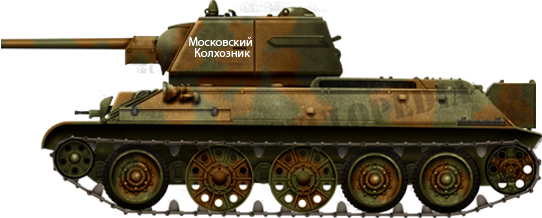 |
| T-34/76 model 1942 at Kharkov. Note the mixture of all steel perforated wheels and solid 'dish' style wheels with rubber tyres. The all steel wheels were originally brought in when material shortages (particularly rubber) were at their height. As the war progressed rubber became more widely available so all steel wheels were withdrawn. By the advent of the T-34/85 all steel wheels were no longer used. Picture source: Tank-Encyclopaedia.com |
And Finally, the Battlefront kit comes with a full set of ‘Early Dished Wheels’, which were solid steel wheels but with perforated rubber ‘tyres’. Once again, these are common for both T-34s and T-34/85s from late 1943.
Summary: The PSC wheels, while adequate, are the least satisfying of the three makes (being a bit 'chunky'). The Battlefront wheels are nice and even show the correct perforations in the ‘tyres’. But the Zvezda wheels are magnificent (for the scale) and their only drawback is that they are specific to the T-34 *only*, while PSC and Battlefront have chosen wheel designs that are suitable for both the T-34 and the T-34/85. (Though Zvezda makes a separate T-34/85 kit with the appropriate wheels.)
1/100 T-34 models - Tracks
Without getting too technical, one of the most characteristic aspects of the T-34 series was it’s wide ‘waffle pattern’ tracks. Unfortunately, as is fairly common in 1/100 plastic wargaming kits this feature simplified to various degrees...
 |
| The Zvezda tracks (right) look even worse than they actually are because I had to sand down an obvious moulding seam that runs down the middle! |
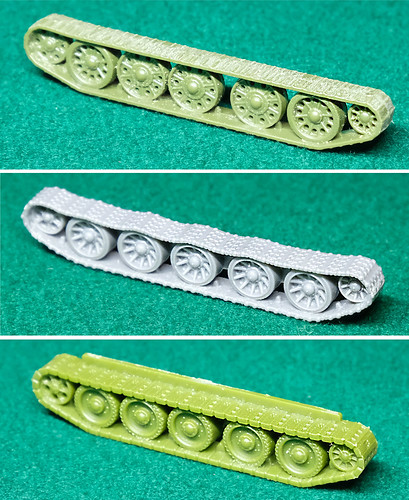 |
| Top to bottom: Zvezda, PSC and Battlefront. |
The Battlefront has had a stab at creating a track link pattern (inside and outside of the track), but it's a lot less detailed as PSC's. However, perhaps in order to tick all these boxes, the tracks are excessively and unattractively thick (which the T-34's tracks were not).
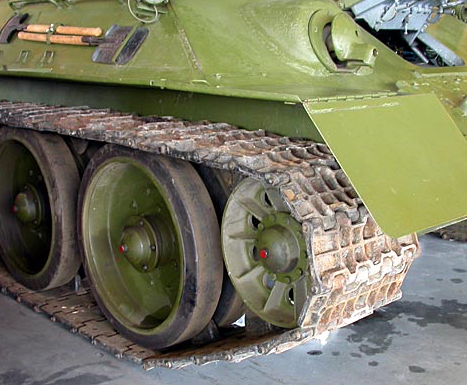 |
| A nice shot of the real T-34's 'waffle' tracks. Source: Bill Maloney |
Summary: I'd love to have seen Zvezda compliment it's lovely wheels with lovely tracks, but it wasn't to be. Zvezda's 1/100 tanks have a poor track record (!) in providing an acceptable link pattern on their models. Battlefront has made a spirited attempt at good tracks in a one-piece format, but don't really pull it off. PSC, I have to admit, have taken the best approach to a satisfactory final product by making a three-part track system. OK, their wheels aren't the best, but out of the two - good wheels or good tracks - I prefer to have the acceptable tracks.
Overall Summary and Conclusions
Well, every manufacturers' set of components seems to have pros and cons, and my overall conclusion is that - perhaps - the 'perfect' 1/100 T-34/76 model doesn't quite exist. However, having said that - bearing in mind that these models are for gaming and are not display quality scale models - being too critical over details that will not effect the effectiveness of these models purpose as game markers would be a little unfair.
Still, even though much of the detail may not be fully appreciable at 1/100 scale at tabletop distance it's satisfying to have a model that's an accurate representation of a historically important tank. And so, which of the three models did justice to the legendary T-34?
It's actually easier to say which of the three that is least satisfying, and that is the Battlefront T-34. After building a couple of their rather nice M4 Sherman models I was a bit disappointed that their T-34s weren't of a similar standard. The main problem, from my point of view, is the level of simplification and how ham-fisted they have stylised some of the signature features of the T-34, like the engine deck and the tracks.
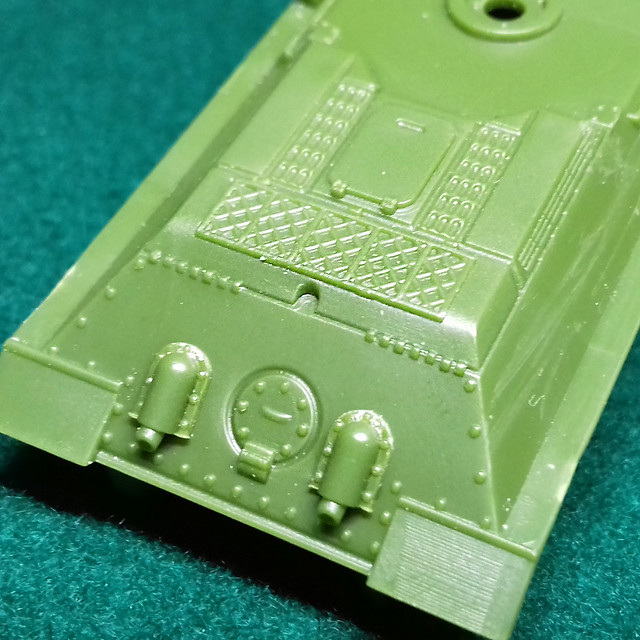 |
| Battlefront's detailing can be a little clumsy looking on occasion. |
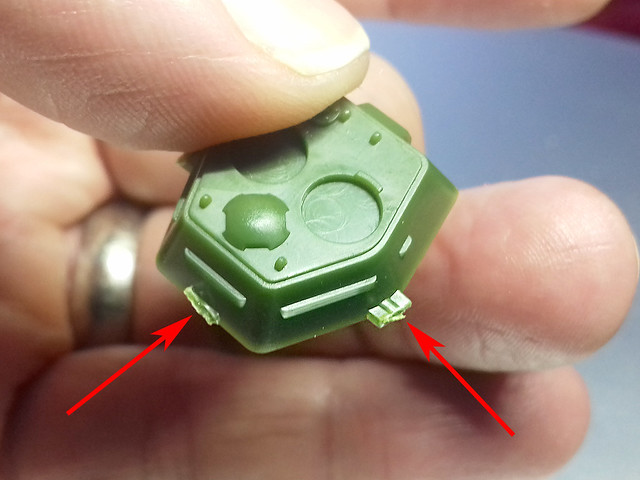 |
| Battlefront sprue attachment points - lots to trim off! |
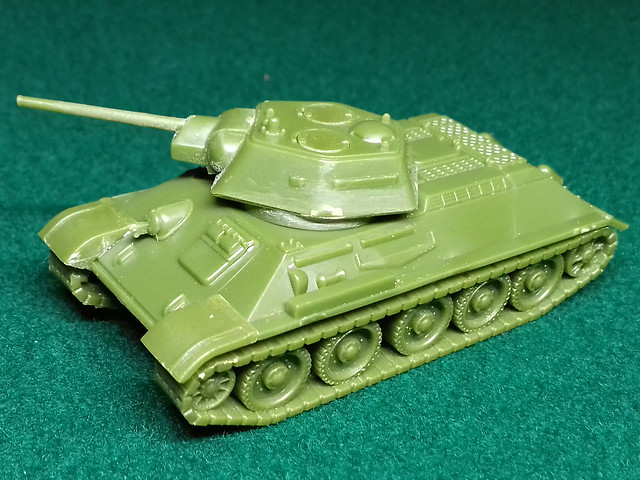 |
| In the end, just a little too untidy for me. Even all Battlefront's extras couldn't win me over! |
Well, I'd love to say Zvezda. It has so much going for it, undoubtedly it is the most technically authentic looking. I love it...But those tracks! If I could have the Zvezda turret and hull, but the PSC's tracks incorporating Zvezda's Half Spider Wheels I really think you would have a fantastic 1/100 Mod. 43 T-34/76. But, that's not the case. 😭
What I think people really want to know is if I could only buy just one make, which one would it be?
I would have to plump for the PSC T-34 set as the best all-rounder, with the caveat that if cost is your primary concern then the Zvezda is the best alternative choice.
 |
| Isn't she lovely! (Just don't look at the tracks, this is her best angle.) |
One cannot ignore the extras one gets with the PSC sprue, it may not be as much as Battlefront gives you but it is a nice little selection of parts and even comes with a commander figure. (One thing I do like about Battlefront's options is that it does come with the Mod. 44 raised commander's cupola allowing you to make the final version of the T-34/76.)
Battlefront and PSC both give you optional parts to make open turret hatches and both BF & PSC give you the option to build a T-34/85 turret with which you can alternatively equip your tank. Very handy. (Though, here is one area PSC falls down - with it's famously horrendous 85mm T-34/85 gun which is grossly over-sized, looking much more like a 120mm gun.)
The bottom line is that as a war gamer you will probably want to buy several models of the T-34 to play with - to make up a tank troop - and with PSC offering a five tank box set (with the cost working out at just £3.75 a tank) the extra variety made available with the optional parts is an attractive feature. Whereas the simple - although beautiful - Zvezda's lack of options means that you would have to make your own extras to provide a bit of variety.
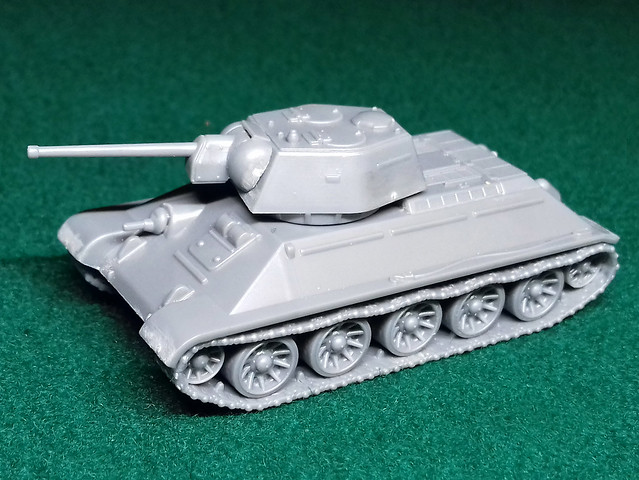 |
| Not outstanding, but a competent all-rounder. Just like the real T-34 really! |
In Part 2: I see what these little beasts look like painted.
Subscribe to:
Posts (Atom)
